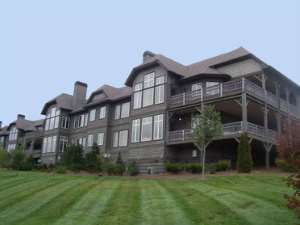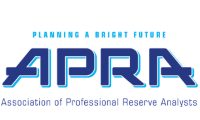Reserve Studies for Community Associations

What is a Reserve Study?
Built from an on-site inspection of your facilities, a Reserve Study outlines a stable, equitable, and proactive Annual Funding Plan to offset your community’s long-term and often costly expenditures.
As the “Gold Standard” in the industry, Miller+Dodson provides Community Managers, Board Members and Property owners with a long-term understanding of a community’s common assets by identifying and accounting for these assets and providing a funding plan that meets the community’s future expenses.
Why should your institution conduct a reserve study?
- Protect your property value
- Increase fairness within member contributions
- Enhance & maintain your common areas
- Be financially prepared for scheduled expenses
Why do Them?
Reserve Studies and Why We Do Them
Peter B. Miller, Arch., RS
I am still asked by community managers to help them explain, both to their association Boards of Directors and community members, why they should do a Reserve Study or why they should fund their Reserves. While the question seems simple, the reasons and motivations vary slightly depending on whether you are a manager, a Board Member, or a community resident. So in order to discuss these motivations, let’s first look at the basic reason why Reserves exist in the first place.
Protect and Enhance The basic, bottom line, cut-to-the-chase principal here is this: Adequately funding the Reserves protects and enhances the physical assets in the community. It also protects and enhances the investment that each owner has made in buying property in the community. It does this by making sure that funds are available to replace worn out components on a timely basis while avoiding the need for special assessments.
There are a number of other basic and equally important principals that also apply:
Fairness The most fair and equitable means to fund the Reserves is by making sure that everyone is contributing their fair share over the period that they benefit from these commonly-owned assets. “Everyone who lives under this roof pays their fair share towards the replacement of the roof.” Without doing a Reserve Study, it is impossible to determine what that “fair share” should be.
Sound Financial Planning As a practical matter, the funding for the eventual replacement of the commonly-owned components should be included in the annual budget. If it is not, then a large and vital part of the community’s annual budget is not being addressed. If the Reserve funding is not properly planned, then special assessments will likely be necessary when the funding is eventually needed. This holds the same importance for newer communities as it does for older communities.
Fiduciary Duty Members of the association’s Board of Directors have the same fiduciary responsibility to their “stockholders” (association members) as does any corporate Director. As such, there exists a fiduciary duty to operate the corporation using sound business judgment. As a “not-for-profit” corporation, community association Board members are held to the same standard of duty by which any other corporate director is measured, i.e., “did the Directors exercise their duties in the manner consistent with the judgment of a prudent business person?” When considering Reserve funding, ignoring a large and important part of the association’s annual budget will not meet the standard of judgment applied here, and therefore Board Members could be held liable for their failure to act as a Breach of Fiduciary Duty.
Contractual Duty Community managers likewise have a contractual responsibility to advise and assist their association clients in managing their communities’ affairs. Annual budgets and sound financial planning represent an important aspect of this responsibility. Therefore, if a manager is not emphasizing to their Boards the importance of adequately funding their Reserves, then the question can be raised regarding whether they are fulfilling their contractual responsibility. In fact, several lawsuits have already arisen from this issue of Breach of Contractual Responsibility.
Statutory Duty A growing number of states have passed legislation requiring community associations to do Reserve Studies. These include the Commonwealth of Virginia, whose statutes require reserve studies to be done not less frequently than every five years. The States of Ohio, Illinois, California, Florida, Hawaii, Nevada, and others have similar legislation. And since community associations are now the “development model” preferred by most municipalities, we are sure to see more states develop legislation addressing the issue of Reserve Funding.
In conducting seminars on the topic of Reserves and Reserve Studies around the country, my experience has been that the vast majority of the audience members understand and agree with the principals discussed here. When given the logic and responsibility of the association to adequately fund Reserves, it’s difficult to ignore the need for Reserves and Reserve Studies. For those few that refuse to grasp the logic, there is always the Greed Principal which states that “if you don’t adequately fund the Reserves NOW, then you end up paying more than your fair share when the roof or parking lot or pool deck fails.”
For more information on Reserves, refer to the Community Association Institute’s GAP Report #24, Reserves and Investing. CAI online archives also contain many articles by assorted authors addressing both technical, legal, financial, and philosophical aspects of Reserve Funding.
About the Author
Peter B. Miller, Architect, RS, is a principal with MILLER DODSON ASSOCIATES, INC., a consulting firm specializing in Capital Reserve Planning and Transition Warranty Inspections for community associations, country clubs and resorts, and religious and educational institutions throughout the U.S. and the Caribbean. A graduate of the College of Architecture and Urban Studies at Virginia Tech, Mr. Miller began his professional experience with community associations in the early 1980’s.
A frequent author and lecturer on the subject of Capital Reserves, Mr. Miller has earned the professional designation of Reserve Specialist (RS). He was the 2004 President of the Washington Metropolitan Chapter of CAI and has also served on the Board of Directors of the South Carolina CAI Chapter. In addition, he recently served as Vice-Chair of the CAI National Reserves Committee, and in that capacity, maintained a chair on the CAI National Ethics and Credentialing Committees. Mr. Miller was the 2002-2003 Recipient of CAI National’s “Award for Excellence in Chapter Leadership”, and was one of the recipients of the 2004 President’s Award for his work on the CAI Governance Taskforce.
The Basic Steps
FAQ! How is a Reserve Study Conducted?
1. Determine Appropriate Level of Service
Full Level I. A Reserve Study in which all five Reserve Study tasks performed:
- Component Inventory.
- Condition Assessment.
- Life and Valuation Estimates.
- Funding Status.
- Funding Plan.
Update, with Site Visit/On-Site Review Level II.
- Verify Component Inventory from Previous Study.
- Condition Assessment.
- Life and Valuation Estimates.
- Funding Status.
- Funding Plan.
Update, with No Site Visit/On-Site Review Level III.
- Life and Valuation Estimates.
- Funding Status.
- Funding Plan.
2. Physical Analysis
- Component Inventory:
~ Type and Quantity of component. - Condition Assessment:
~ Physical Condition of Components. - Life and Valuation Estimate:
~ Forces impacting on its remaining usable life.
~ Influence on cost of replacement.
3. Financial Analysis
- Funding Status.
- Funding Plan.
4. Coordination with Client
- Review and, where appropriate, incorporate client input.
- Develop recommendations for Funding Strategy.
5. Continued Service
- Meet with membership to present Recommendations and Funding Strategy.
- Annual or other future Update of Reserve Study. Updates are normally recommended every 3 to 5 years.
What is Included in the Proposal?
… and what’s not?
The standard Miller+Dodson proposal/contract includes the following:
An initial on-site meeting on the day of inspection to:
- Understand the facility
- Understand the goals of the Board and management, and
- Clarify expectations for what the client should anticipate from a Miller+Dodson Reserve Study.
An inspection of the facility including the common and limited common elements that the Association is responsible for. The inspection will:
- Identify the inventory of elements that will be included and excluded in the Reserve Study
- Quantify the included elements, and
- Assess the condition of each of the included elements with respect to setting a Remaining Useful Life for each
After the inspection, the analyst will prepare a report. The report will include and opening letter, the analytical models and results, and condition statements. Our reports meet or exceed the Community Associations Institute’s National Standards.
- The opening letter contains a description of the property and a basic outline of the included elements. The type of study is stated, along with the analytical methodologies used in developing the recommended funding. Statements about the current funding are provided along with statements describing the purpose and basis of the study. The letter is concluded with and acknowledgement of the management and/or board, and the analyst’s credentials.
- The letter is followed by an Executive Summary of the analysis and results, which is followed by progressively more detailed explanations of the analytical methodologies and results The inventory of included and excluded elements is provided, followed by a calendar listing of the included inventory. Please note that this calendar is not a “To Do” list but rather a recommendation of prudent funding in an appropriate time frame should the governing body of the facility elect to perform some aspect of work.
- Condition Statements follow and these provide descriptive comments about the major elements in the inventory along with helpful remarks to guide management and board in maintaining these elements. The end of the report also included appendices and accounting summaries, followed by a library of videos to aid in addressing frequently asked questions.
What is not included?
Follow-up meetings are not included in our standard contract. Less than 10% of our clients request follow-up meetings, and we do not want to assume them in our standard contract, and burden our clients with the cost of something they may not want or need. In most cases, a simple telephone call, email, or on-line meeting can address most concerns. We typically do not charge for simple telephone calls, emails, or on-line meetings.
What additional things can you request?
Upon request, Miller+Dodson will be happy to supply, at no cost, an Excel Spreadsheet of the facility’s analysis. This is a non-functioning spreadsheet of the accumulated data and inventory.
On-site follow-up meetings are provided at additional cost, which includes travel and professional time. Typically, this type of meeting last about an hour with one to two hours of preparation. Travel varies and includes mileage and travel time at a lower hourly rate.
Key Points for Associations
Why must your community establish and maintain a Replacement Reserve fund?
“One of the primary business duties of community associations … is to maintain and preserve the property values of the residential units and the common property. The replacement reserve fund has a tremendous impact on an association’s future, regardless of age, size or architectural type of the development.”*
- It meets the legal, fiduciary, and professional requirements.A replacement fund may be required by:
• Banks, Mortgage Lenders,
• State statutes, regulations, or court decisions;
• Your community’s governing documents. - The replacement fund enhances resale values. Many new buyers, lenders, and real estate professionals are aware of the ramifications of inadequate replacement funds.
- The fund provides for the planned replacement of major common items. Owners expect their association to fulfill its obligations to replace worn or obsolete items. This allows for the aesthetic qualities of the community to be maintained, thereby also enhancing property values.
- It minimizes the need for special assessments. Insufficient funding may lead to special assessments when major elements must be replaced. A history of past or pending special assessments may hurt property values.
- It distributes the contributions of old and new owners. Major items deteriorate with use and age. Although a roof will be replaced when it is 20 to 25 years old, every owner who lived under that roof should pay a share of its replacement.
- Accounting standards require proper maintenance of a replacement fund. In 1991, the AICPA released its guidelines addressing Common Interest Realty Associations. This guide, called the CIRA guide, specifically states that communities must disclose information about reserve funding policy.
* A paraphrased excerpted from the Community Association Institute’s Guide for Association Practitioners #24.
Sample Report
For many of our clients, Miller+Dodson is asked to develop Reserve Studies for multi-faceted communities, such as those with common site amenities coupled with townhouses and mid-rise condominiums.
Rest assured that Miller+Dodson is well experienced in providing Reserve Study services for complex communities that have combinations of Associations or sub-groups within a single Association.
Please note that all of our samples have been altered to protect the confidentiality of our clients, and the data has been adjusted to suit our desire to provide you with samples that closely example a report suitable for your property and facilities.
Please note that these Sample Reports are being provided for marketing and informational purposes only, and the specific data contained in our samples may not be applicable to your study.




